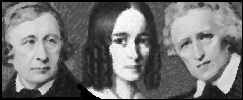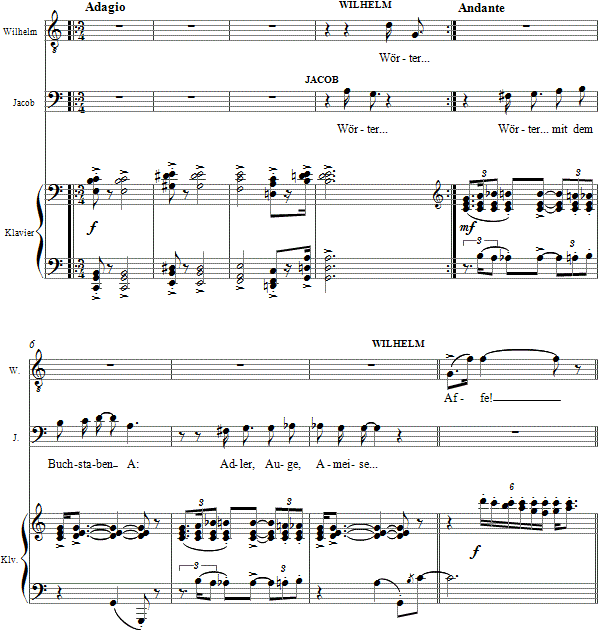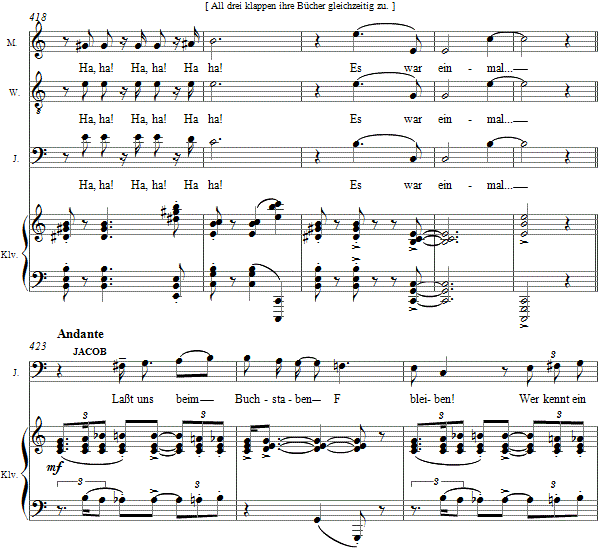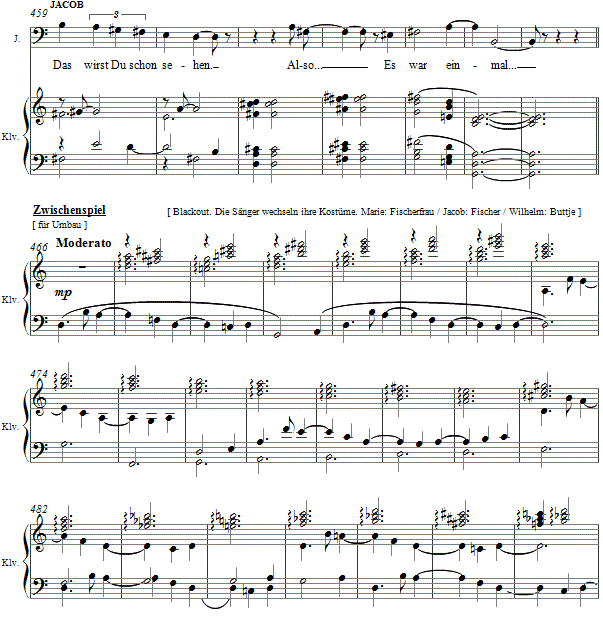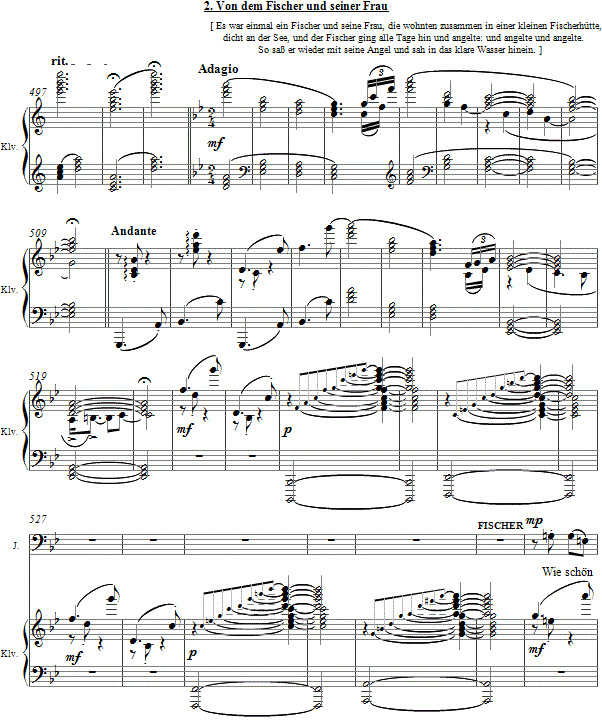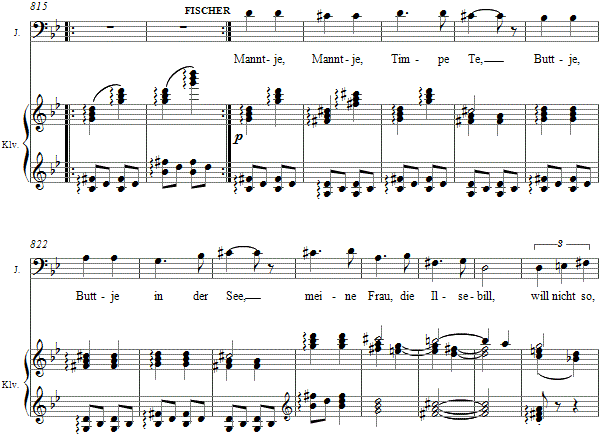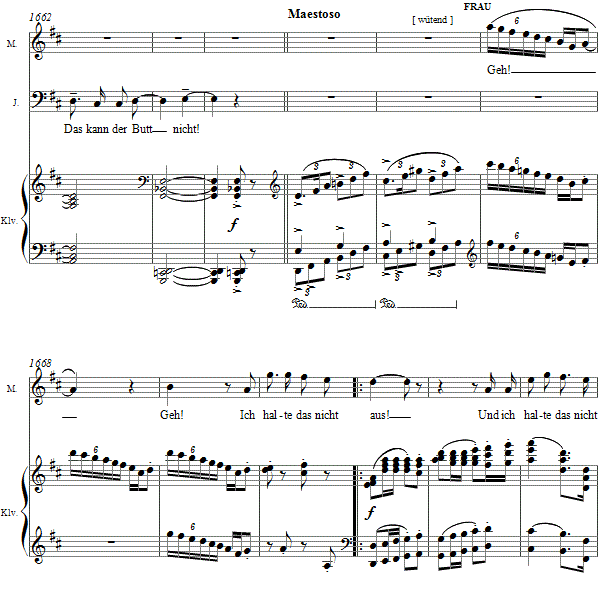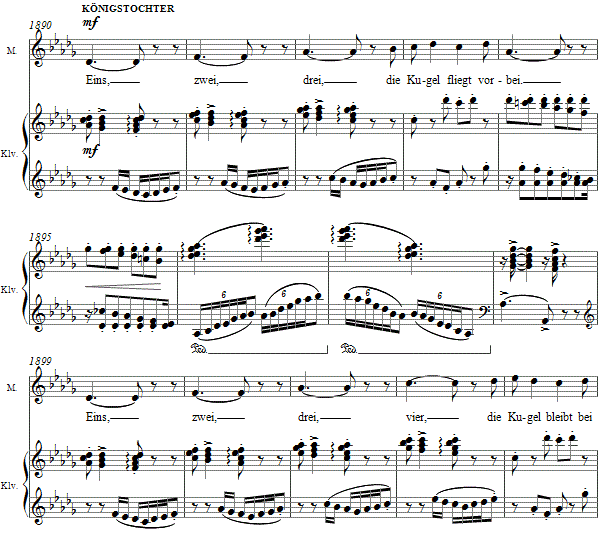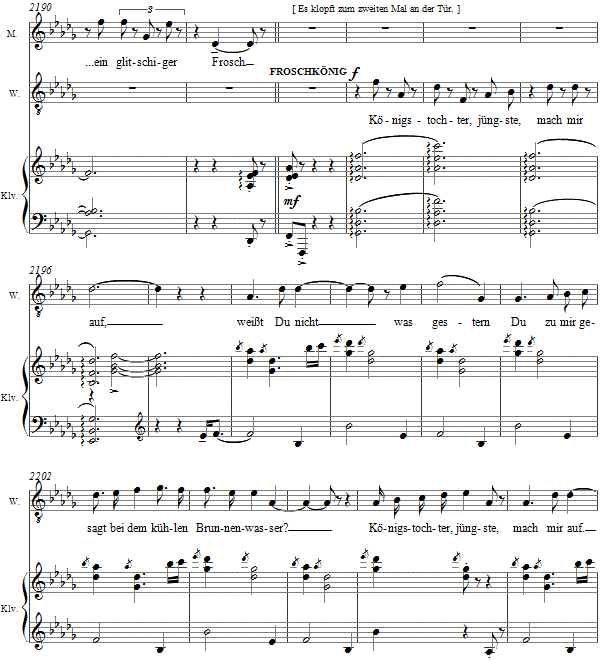Music and Texts of GARY BACHLUND
Vocal Music | Piano | Organ | Chamber Music | Orchestral | Articles and Commentary | Poems and Stories | Miscellany | FAQs
Es war einmal - (2012)
Susanne Paasch nach den Brüdern Grimm
for soprano, tenor, baritone soli and chamber ensemble
(celesta, harp, harmonium and percussion)
With my librettist, Susanne Paasch, we planned to write a settings of some Grimm fairy tales. While she was having surgery and for the obvious musical possibilities, I began with the rather less well known Läuschen und Flöhchen, and as we then worked together over many weeks, other tales came to mind and uniting three into one through-composed work grew from this work. The 'conceit' uniting them makes use of the Grimm brothers and a Marie Hassenpflug, who also is known to have contributed to the collection by means of introducing the Grimm brothers to other informants and their folk stories. Three singers, then, became our cast by which to tell four tales, and throughout they play a number of characters.
Susanne Paasch
Susanne Paasch studied music and Romance languages and literature in Detmold and Berlin, theater in Bochum with engagements in Augsburg and St. Gallen. Additionally she has worked in stage direction in various projects, and taught music, French and theater. She has adapted three Grimm stories for our storytellers to enact, the three playing all the parts throughout.
The chamber ensemble consists of celesta, harp, harmonium and percussion (vibraphone, triangle, hanging cymbal with soft sticks and snare drum).
Opening in the study of Jacob and Wilhelm Grimm, they ponder (amusingly, as this is for children) their ongoing work towards a complete German dictionary. Jacob, elder and more serious, and Wilhelm, younger and our comedian for the purposes of this set of tales, are interrupted happily by the entrance of Marie, who brings them the first story. Among the musical materials is a signature relationship between the opening tonic and its mediant.
The three playfully choose to enact some tales, so many of which begin with "Once upon a time...."
The refrain for this story is treated musically, as more and more phrases lengthen it in the elaboration of the story and its many fanciful characters are portrayed in a rush by the three friends.
The conclusion of the first fairy tale ends with a reminder, "Once upon a time...." The more serious Jacob wants to return to their work on the dictionary, but instead they are reminded of a next story.
The second story is separated from the first by a small fughetta, as the three improvise costumes in order to play the second tale.
The next story of the fisherman, his demanding wife and a magic fish begins on a more serious tone in octaves, as the first themes are stated as a small overture.
The magic fish (actually an enchanted prince) is called by the fisherman in a magical rhyme which reappears often in the original story. The music which accomapnies varies with each repetition.
The character of the demanding, never satisfied fish wife is painted in musical fioatura and a wide-ranging tessitura, which becomes more aggressive with each greater demand of the fisherman.
The tale of the fisherman and his wife ends with the wife having lost all, the magical fish singing the last repetition of the conjuring spell as the fisherman and wife are returned to their impoverished circumstances for having demanded too much. Another short fughetta breaks the mode, allowing for some costume changes, and its subject becomes the musical material for the last of these three Märchen, the well-known story of the Frog King.
Our young princess plays with her golden ball and loses it in the bright key of D flat major, allowing many wide-ranging arppeggios to accompany the flight of the ball and play which ensues. The "King's daughter" loses her treasure and it is returned by the enchanted prince who was transformed into a frog.
The Frog-King demands his part of the bargain, and woes with a lyrical melody and its accompaniment the maiden. In the end he is transformed back and the tale ends happily.
The third tale ends, as the three characters break with their play, Wilhelm and Marie finish the retelling of the tale and its conclusion about the loyal servant, Heinrich, as the Grimm's study ceases to be an improvised theater for these stories -- for the time being.
Piano-vocal edition -- 103 pages
Chamber ensemble score - 201 pages
Celesta part - 50 pages
Harp part - 43 pages
Harmonium part - 53 pages
Percussion part - 16 pages
Given that harmoniums are of varying dispositions in terms of registers as well as technical specifications (pressure versus suction types) and even number of keyboards, the harmonium part is not marked with register suggestions as found in 19th and early 20th century solo and some opera scores are, but rather it is left to the taste of the player and the abilities and limitations of a specific instrument.
The scores and parts for Es war einmal are available as a free PDF download, though any major commercial performance or recording of the work is prohibited without prior arrangement with the composer. Click on the graphics below for these scores.
For inquiries and the arrangement of performance rights, click here for Contact Information
